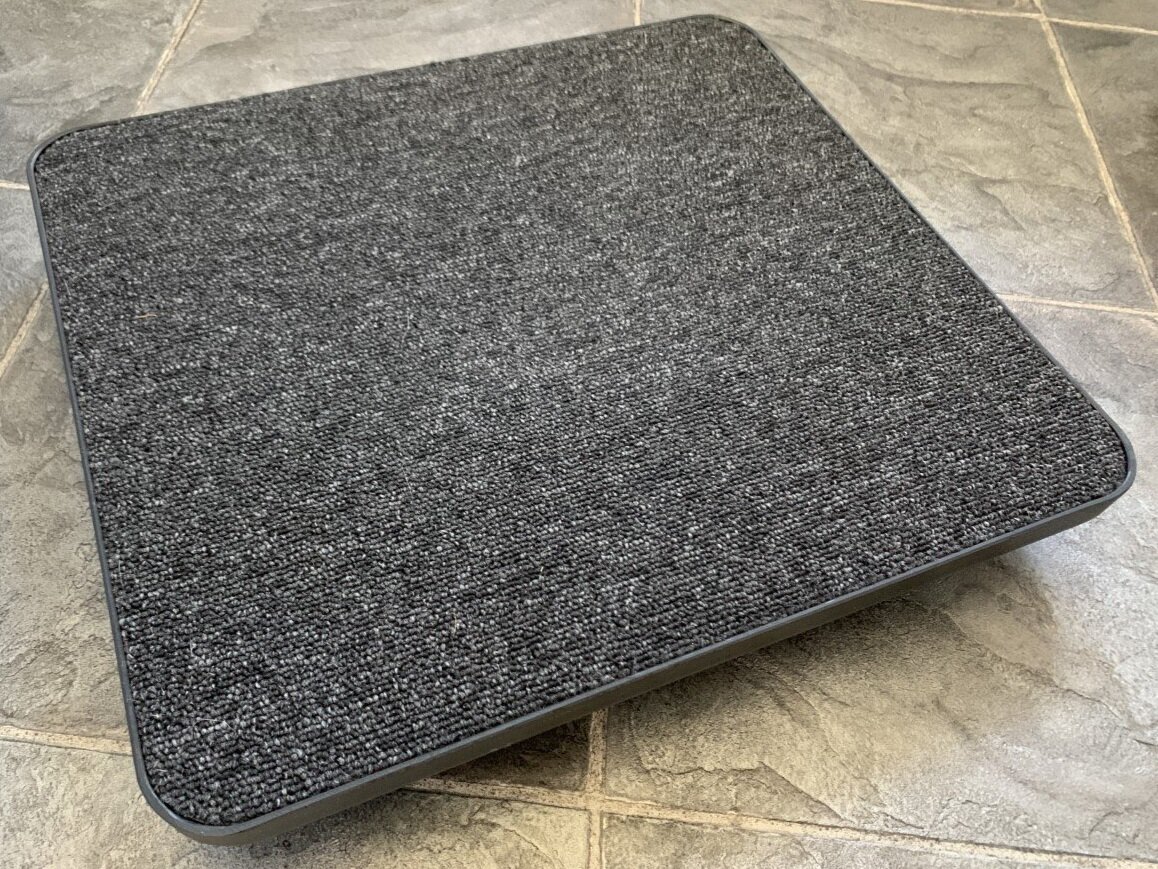I recently posted a poll on my LinkedIn page, asking my contacts what sort of content they would like to see. 50% of the voters opted for Ergonomic Product Reviews. So here we are…
I scanned my workstation to get inspiration on what to talk about, and following a recent discussion with Darren Kerr, a Podiatrist and Posture Coach who specialises in Wonky Bodies, I thought my Standing Platform may be of interest.
MoovRite Rocking Standing Platform and Footrest
I use this item from Posturite, and there are a number of others out there to consider - often advertised as balance boards - such as this one from Amazon.
So what are my thoughts?
Pros:
Large surface area (450 x 400 mm) to allow for comfortable feet positioning about hip width apart (for most people), in either orientation.
Anti-fatigue matting built in to the surface to help absorb pressure at the contact points, and encourage very fine subtle movements of the lower limbs and feet to help redistribute that pressure.
Can be used as a low profile rocking footrest for those that don’t quite have solid contact underfoot with the floor when seated, which can help to stimulate circulation and reduce static loading.
Can be used in either orientation; movement from front to back or side to side. Front to back can help to recruit the muscles that work to balance the pelvis to support the spine in its strongest position. Side to side can help to loosen the muscles that assist rotation of the hip joints (as one example) that could help improve your gait. Either way, dynamic working can help to activate other muscle groups that aren’t normally stimulated when sitting or standing, helping to send oxygen and nutrients around the body, whilst taking away the build up of waste products.
It can help to maintain productivity, by moving without having to move away from the work area. However, don’t forget that a visual break is very important too!
It is strong, yet lightweight, so you can move it into position with your feet, without having to bend under the desk.
Cons:
If wanting to be used as a footrest, it is not height adjustable and hence may not provide the user with full contact underfoot.
Some may say the price is prohibitive - however it is important to remember that this is almost a 4-in-1 product: standing platform front to back, standing platform side to side, rocking footrest and anti-fatigue mat.
May not be suitable for those with altered vestibular sensory processing, unless advised by a medical professional as part of a rehab programme.
Overall, there is no denying that movement is key to any good workstation set up. With static postures, aches and pains are likely to begin and/or increase. Any form of encouragement towards a more dynamic workstation set up can only be a good thing. Therefore, in case my longer list of pro’s in comparison to the con’s didn’t already tell you, I highly rate the use of a Standing Platform, as a means to increase movement, stimulate circulation, activate a wider range of the body’s muscles and help to enable you to work more comfortably. As with everything, I would still encourage you to move away from the desk regularly to help with visual and mental breaks too!
I would also encourage you to check out Darren’s company PostureFit, he has some great advice on helping to rebalance the body to reduce aches and pains.


